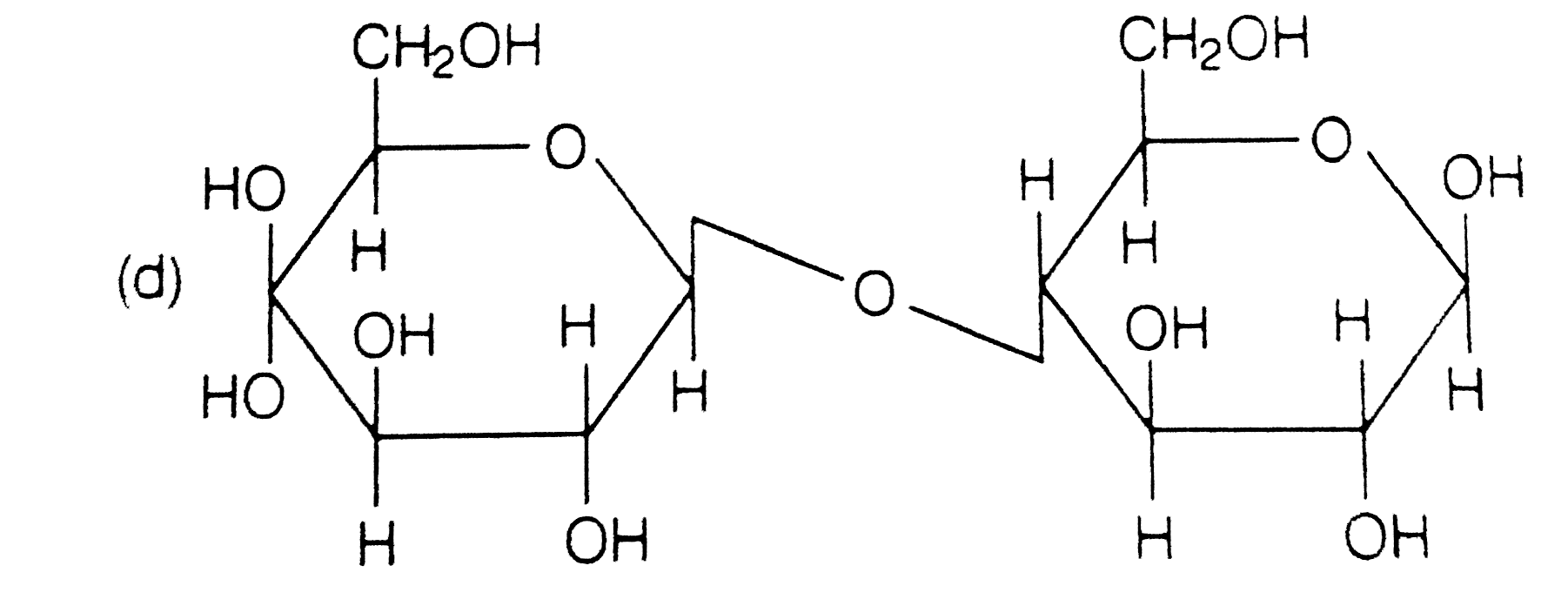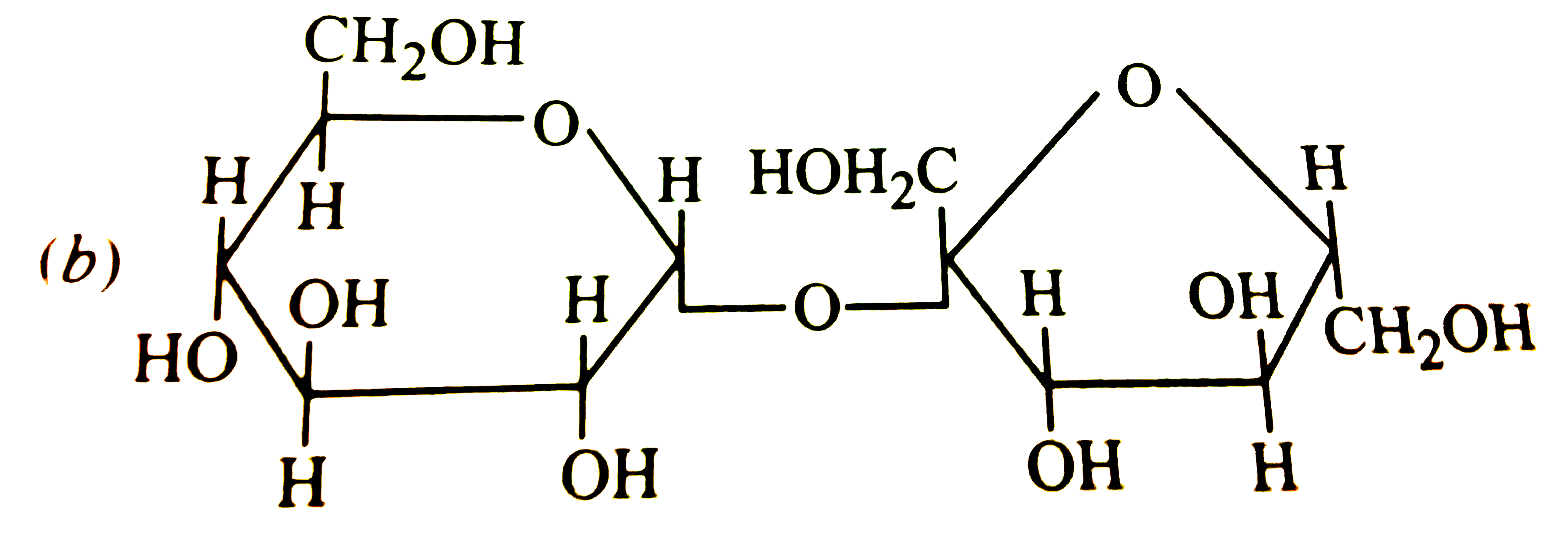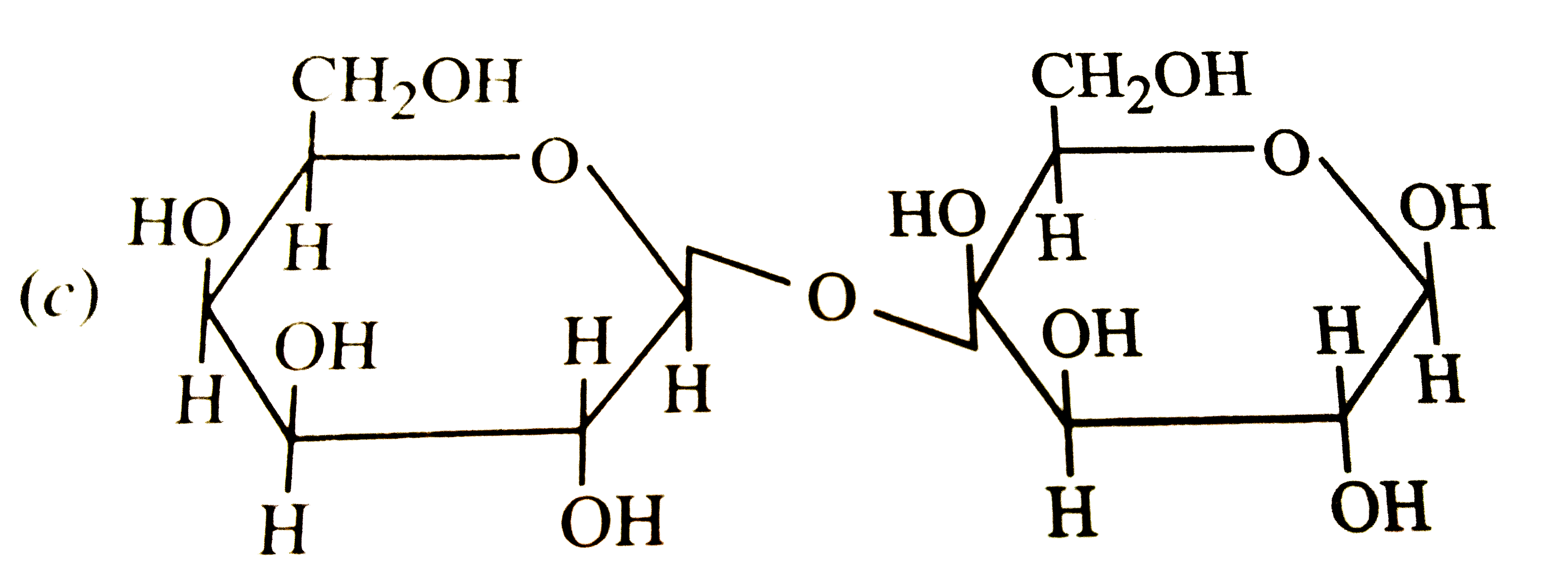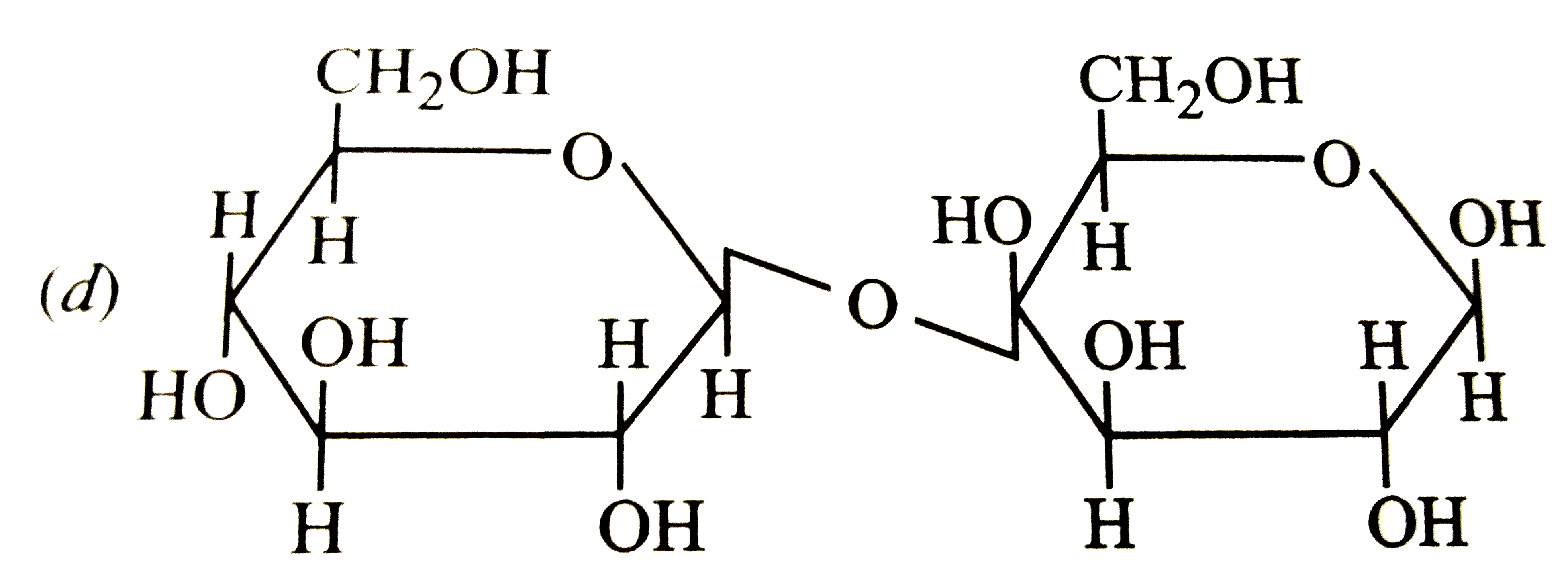The two monosaccharides are joined together by an oxide linkage formed by the loss of a water molecule. Such a linkage between two monosaccharide units through oxygen atom is called glycosidic linkage. In disaccharides, if the reducing groups of monosaccharides i.e., aldehydic or ketonic groups are bonded, these are non-reducing sugars, e.g., sucrose. On the other hand, sugars in which these functional groups are free, are called reducing sugars, for example, maltose and lactose. A non reducing disaccharide 'A on hydrolysis with dilute acid gives an equimolar mixture of D-(+)glucose and D-(+)-Fructose.

Glucose on reaction with acetic acid gives glucose pentaacetate. What does it suggest about the structure of glucose ?
C-1 is anomeric carbon
C-5 is anomeric carbon
3-OH groups are present
5-OH groups are present
The correct Answer is:D
It indicates that 5.-OH groups are present which react with acetic acid to give glucose pentaacetate,
Similar Questions
The two monosaccharides are joined together by an oxide linkage formed by the loss of a water molecule. Such a linkage between two monosaccharide units through oxygen atom is called glycosidic linkage. In disaccharides, if the reducing groups of monosaccharides i.e., aldehydic or ketonic groups are bonded, these are non-reducing sugars, e.g., sucrose. On the other hand, sugars in which these functional groups are free, are called reducing sugars, for example, maltose and lactose. A non reducing disaccharide 'A on hydrolysis with dilute acid gives an equimolar mixture of D-(+)glucose and D-(+)-Fructose.

In the above reaction, reactant 'A' is:View SolutionThe two monosaccharides are joined together by an oxide linkage formed by the loss of a water molecule. Such a linkage between two monosaccharide units through oxygen atom is called glycosidic linkage. In disaccharides, if the reducing groups of monosaccharides i.e., aldehydic or ketonic groups are bonded, these are non-reducing sugars, e.g., sucrose. On the other hand, sugars in which these functional groups are free, are called reducing sugars, for example, maltose and lactose. A non reducing disaccharide 'A on hydrolysis with dilute acid gives an equimolar mixture of D-(+)glucose and D-(+)-Fructose.

Name the linkage that holds the two units in the disaccharide?View Solution
Knowledge Check
- Question 1 - Select One
In disaccharides, if the reducing groups of monosaccharides, i.e., aldehydic or ketonic groups are bonded, these are non-reducing sugars. Which of the following disaccharide is a non-reducing sugar?
A B
B C
C D
D
- Question 2 - Select One
In disaccharides, if the reducing groups of monosaccharides, i.e., aldehydic or ketonic groups are bonded, these are non-reducing sugars. Which of the following disaccharide is a non-reducing sugar?
A B
B C
C D
D
- Question 3 - Select One
In disaccharides, if reducing groups of monosaccharides i.e. aldehydic or ketonic groups are bonded, these are non-reducing sugars. Which of the following disaccharides is a non-reducing sugar ?
A B
B C
C D
D
The two monosaccharides are joined together by an oxide linkage formed by the loss of a water molecule. Such a linkage between two monosaccharide units through oxygen atom is called glycosidic linkage. In disaccharides, if the reducing groups of monosaccharides i.e., aldehydic or ketonic groups are bonded, these are non-reducing sugars, e.g., sucrose. On the other hand, sugars in which these functional groups are free, are called reducing sugars, for example, maltose and lactose. A non reducing disaccharide 'A on hydrolysis with dilute acid gives an equimolar mixture of D-(+)glucose and D-(+)-Fructose.

What is the mixture of D-(+) glucose and D-(+) fructose known as ?View SolutionName the linkage which joins two monosaccharide units through oxygen atoms.
View SolutionWhich is non-reducing sugar
View SolutionThe linkage between the two monosaccharide units in lactose is
View SolutionThe linkage between the two monosaccharide units in lactose is _____.
View Solution

